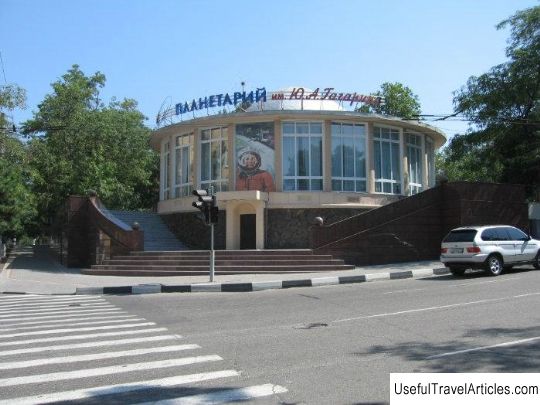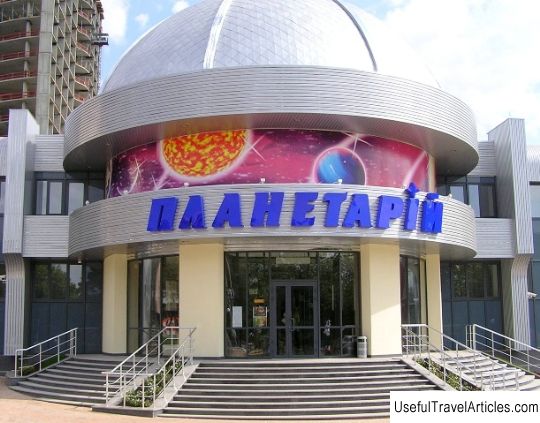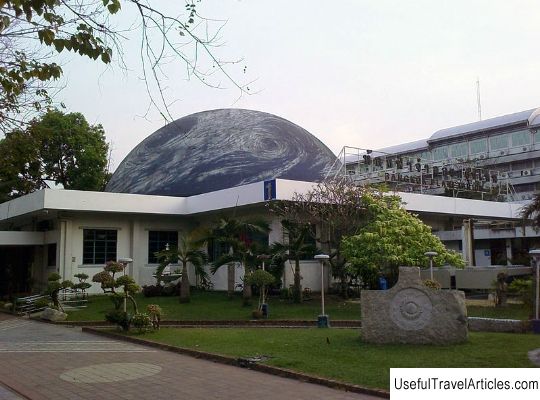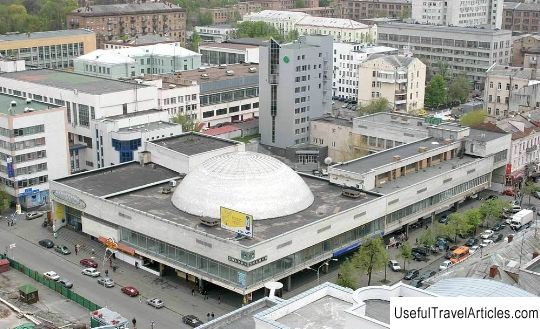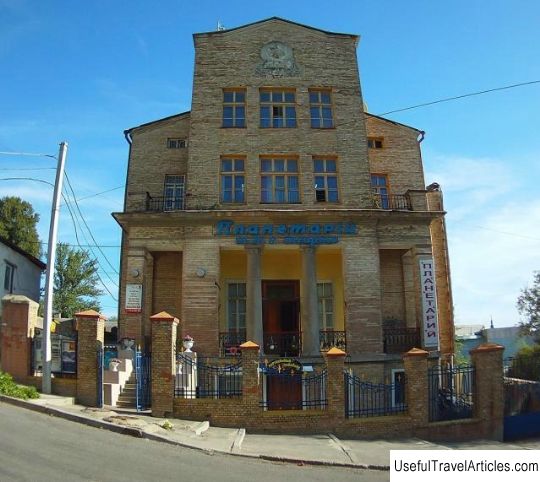Moscow Planetarium description and photos - Russia - Moscow: Moscow
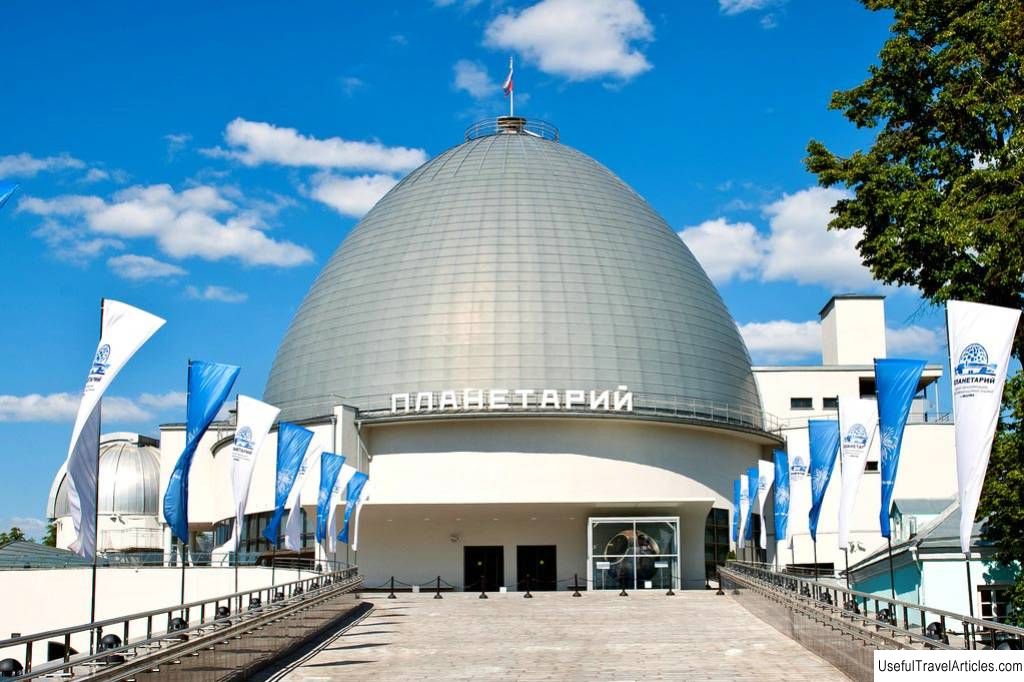
Moscow Planetarium description and photos - Russia - Moscow: Moscow. Detailed information about the attraction. Description, photos and a map showing the nearest significant objects. Photo and descriptionIn many countries and cities, there are scientific and educational institutions in which the celestial sphere with all celestial bodies and systems - stars and planets, galaxies and constellations is shown to visitors. Demonstration of the starry sky and the processes taking place on it, helps to carry out the device called "Planetarium". Moscow's own planetarium appeared in the late 1920s. Then he was the only one in the country and the thirteenth among those existing in the whole world. History of the Moscow PlanetariumIn 1927, the founder and first director of the Marx and Engels Institute David Borisovich Ryazanov put forward a proposal to the Moscow Soviet. He called on the government of the capital to create a scientific and educational institution, which could bring to the masses new knowledge about astronomy and the structure of the world. The necessary projection apparatus "Planetarium" was recently invented by the German company Carl Zeiss Jena , and its capabilities were demonstrated to the world community in the planetarium, which opened in the German Museum in Munich in 1925. The Moscow City Council supported the proposal and allocated a quarter of a million rubles for the purchase of the necessary equipment and the construction of the building. Ryazanov went to Germany to negotiate the purchase of the device from the firm of Karl Zeiss, and the architects M. Barshch and M. Sinyavsky, who were approved for work on the project, began to create drawings. The authors of the Moscow Planetarium building decided to take as a basis the shape of a bird's egg, which, as they thought, could best demonstrate the celestial sphere and its objects. The project envisioned a spacious auditorium in which 1400 people could simultaneously look at the sky and listen to lectures. The diameter of the dome was 27 meters , moreover, the strict geometry of the building was emphasized by elements attached from the outside - a spiral staircase and a porch of the main entrance. The first stone in the foundation of the future building was laid in September 1928 and already November 5, 1929 the planetarium was opened . Soviet Russia became the fourth world power to have such a scientific and educational institution. Eight years after the inauguration Ryazanov was accused of having links with the Mensheviks and was shot , and the Moscow Planetarium by that time turned into a center for the propaganda of astronomical knowledge. A circle for young lovers of stargazing has opened there. In 1936-37, a cycle of lectures on the theory of jet propulsion for schoolchildren and students in the planetarium was read by one of the pioneers of Soviet rocket technology V. P. Glushko . performances , which were staged in the planetarium with the participation of professional actors, were very popular with the audience. For this, plays of the corresponding theme were chosen: "Galileo", "Copernicus" and "Giordano Bruno". During the Great Patriotic War, the planetarium staff provided invaluable assistance in training scouts and military pilots. In the Star Hall, lectures were given on astronomy and the basics of orienteering using a star chart. The planetarium worked throughout the war and was closed for all four years only for two months. After the end of the Great Patriotic War, the scientific and educational activities of the planetarium resumed, and in 1947 it was opened on its territory astronomical site . In the 1950s, sections on astronomy, geography and physics worked successfully in the Moscow Planetarium, and devices were designed to demonstrate the law of universal gravitation. The old Planetarium apparatus was replaced by a more modern one in 1977. Now, in the planetarium hall, automatic programs have begun to be demonstrated, accompanied by an audio track and visuals. The educational programs of the Moscow Planetarium have become an elementary school for famous Soviet astronomers, who made scientific discoveries in the field of space research. Lectures for visitors were read by world famous scientists, writers, geographers and researchers: I. D. Papanin, K. G. Paustovsky, T. Heyerdahl, O. Yu. Schmidt . Before flying into space, Soviet cosmonauts underwent the necessary navigation training in the planetarium and, returning to their homeland, read lectures and talked about what they saw in space. The most famous and favorite lecturer among the Moscow public was Yu. A. Gagarin . At the end of the 80s of the last century, there was a Fantastic Theater in the Moscow Planetarium, the troupe of which staged performances on space themes. The works of domestic and foreign writers were taken as a basis. Planetarium today In 1994, the Moscow Planetarium was closed for reconstruction , which they tried to carry out with funds from private investors. Things went on with a creak until 1998, when, finally, the Moscow government issued a decree on the comprehensive restoration and reorganization of the capital's planetarium. The financing of the necessary work was determined by the business plan, and Moscow architects began to develop the project. They visited many countries of the world, where they got acquainted with the architectural appearance and technical arrangement of buildings, which housed such scientific and educational institutions. Finally, in 2002, work began to bring the project to life. The process turned out to be long and difficult, and Moscow Planetarium reopened only on June 12, 2011 . The modern building comprises several levels. The lower floor is located underground . There is a Small Star Hall , where children can see a miniature of the starry sky with cosmic bodies, planets and galaxies. There is also a 4D cinema and exhibitions devoted to physics and astronomy and related to the interactive museum "Lunarium". The exposition of "Lunarium" continues on the first ground floor of the planetarium. The interactive museum offers rooms dedicated to the history of mankind's exploration of outer space. The history of the creation and development of the capital's planetarium itself is told with the help of the exhibits of the Urania Museum. Second ground level - the holy of holies for observations of the sky and outer space. The largest telescope in the capital is installed here. Its diameter is 300 mm, and the diameter of the telescope of the small observatory is 400 mm. Both observatories are available to planetarium visitors. On the second floor there are Urania halls , which show a collection of meteorites found on the territory of our country, and old equipment installed in the Moscow planetarium in the early years of its operation. Under Big Star Hall is arranged with a dome on the top floor. It has a modern powerful projector that allows viewers to see several thousand celestial bodies simultaneously. The Moscow Planetarium has an open Sky Park astronomical site , on which devices for observing celestial bodies are installed. Planetarium for children Educational and entertainment programs of the capital planetarium are always popular with curious preschoolers and adolescents. Star Lessons Lectures introduce students to the mysteries of planets and stars, talk about the laws of nature and how they work in space. The lecturers are reputable scientists and researchers from Moscow universities. Primary school students and older preschoolers will love the lessons at the Theater of exciting science . During the lessons, their participants literally immerse themselves in the world around them and begin to comprehend the secrets of the night sky together with the astrologer. The Astronomy Circle , which first opened its doors to young astronomers in 1934, continues its work today. Russian astronomical science is proud of its graduates. Children will not only study, but also expeditions to various Russian observatories, meetings with space explorers and excursions around their native land. In the Small Star Hall there is a Sun City attraction , and Watching the film "Flight of Fantasy" will allow you to visit space, feel the joy of free soaring, experience real space overloads and return to your homeland safe and sound. In the Great Star Hall, a film about black holes , which is called the reverse side of the Universe, is especially popular with the audience. Achievements of modern science and technology allow visitors to the planetarium and the Great Star Hall to make a virtual flight along the Milky Way, follow how celestial bodies are born and die, and immerse themselves in the atmosphere of space. Going on excursions to museums , working in the planetarium, both children and their parents will be able to learn a lot of new and interesting things about space and celestial bodies. For example, the excursion program about meteorites tells about stones falling from the sky and the reasons for such phenomena. The tour is accompanied by visual aids that you can touch and even taste. The program of the excursion "Comprehension of Space" is devoted to the methods and techniques of studying celestial bodies and the history of the development of astronomy. In the program of the excursion, its participants get acquainted with the exposition of the interactive museum "Lunarium", where everyone can feel like a scientist exploring the big world around us. Adults about the stars and planetsThe Moscow Planetarium regularly Popular Astronomy for Beginners courses are held. The program for adults, which includes theoretical and practical lessons, introduces cadets to the map of the starry sky, the laws of physics related to the motion of planets, the basics of spherical astronomy and celestial navigation. Course participants also learn the equipment with which they can observe celestial bodies. If you are seriously interested in astronomy, are fond of physics and other exact sciences, the Tribune of a Scientist lecture cycle has prepared the Moscow Planetarium just for you. The lectures, accompanied by a presentation of materials on the topic, tell about modern scientific achievements in astronomy, aviation and space exploration. Notes
|








